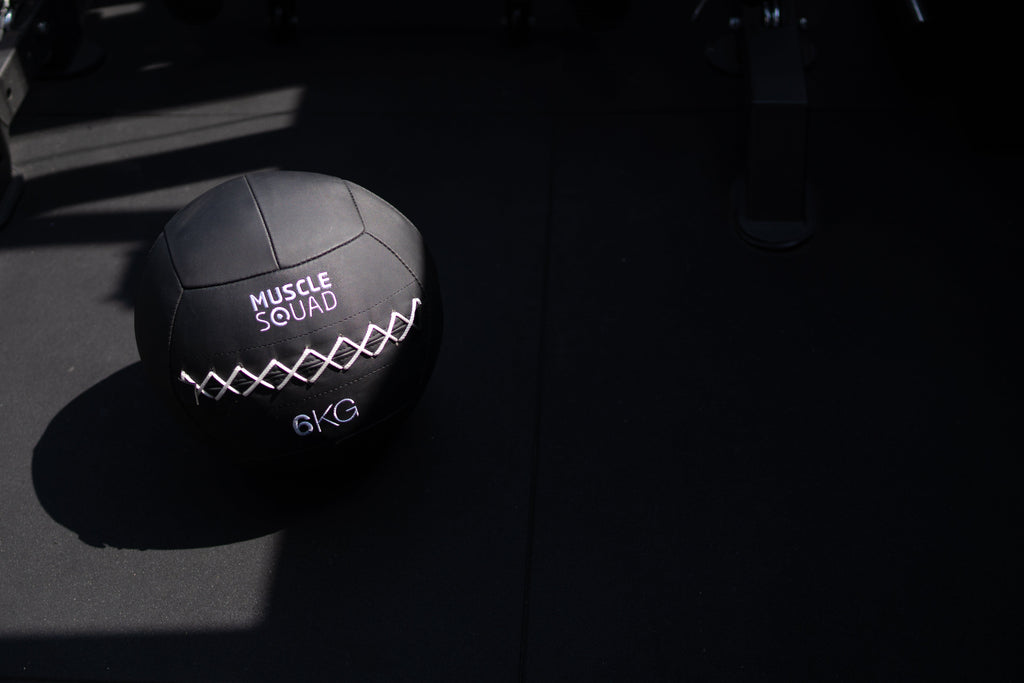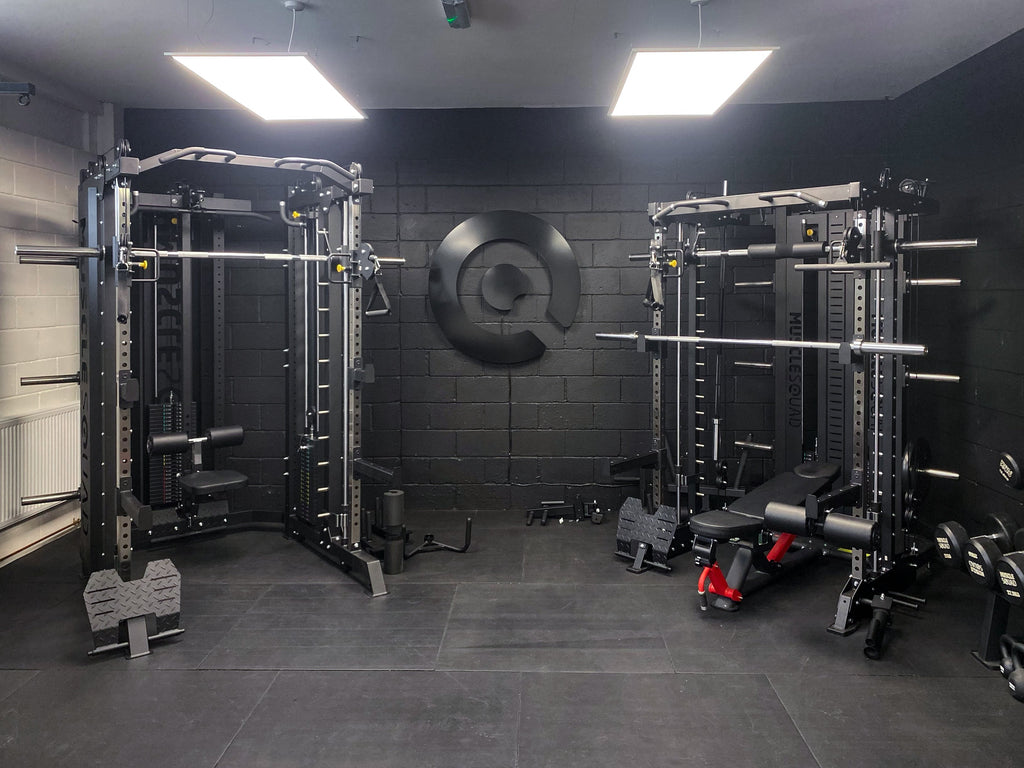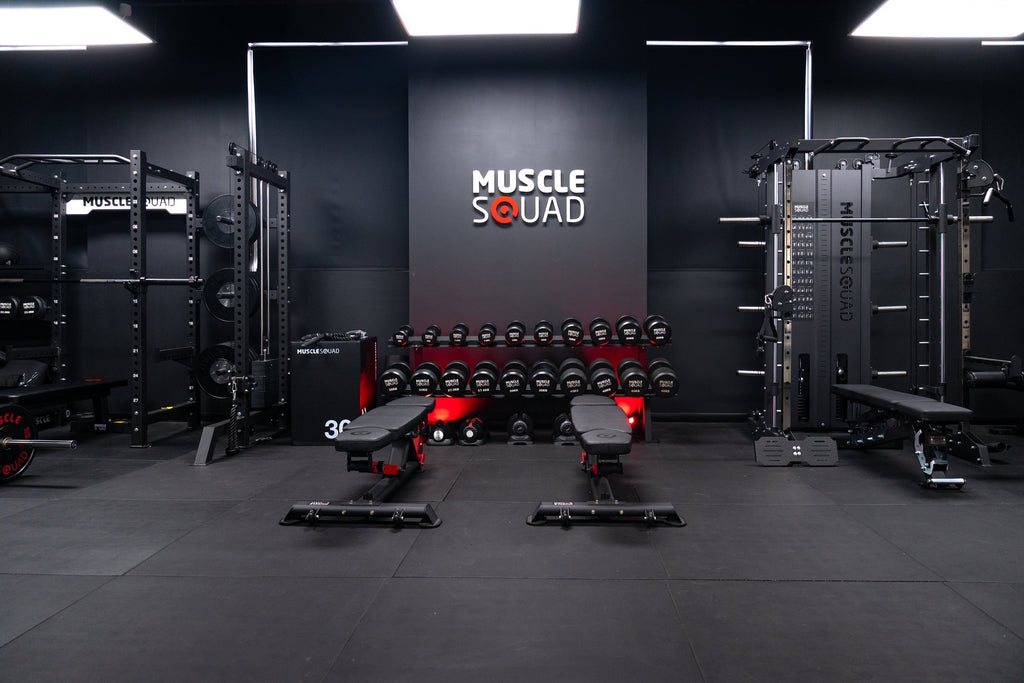The power rack (also known as a squat rack), is one of the most versatile inventions in the history of weightlifting. It can unlock a massive array of exercises, but most importantly, it allows you to do the three main compound movements: squats, bench press and deadlifts.
Power racks are designed for lifters who are looking to workout using a bench, barbell and plates. This includes other exercises such as the overhead press, bent over rows, barbell lunge and Romanian deadlift.
In other words, a power rack can only help you on your fitness journey. But do you NEED one?
What is a Power Rack?
A power rack is essentially a sturdy cage that can hold a heavy loaded barbell at various heights. Most power racks also have safety features implemented such as safety bars, spotter arms, and J-Hooks, all of which are tested to be able to hold a heavy weight.

What is a Power Rack used for?
When used with a bench, bar and plates, a power rack means you can easily train your entire body from home. The main benefit of barbell training is that you can progress/adjust the weight in very small increments. Think of it as a big adjustable dumbbell that you can use for every exercise
All racks have the apparatus for you to be able to bench press, squat, deadlift, and more. All of our racks also include a pull up bar. If you’re looking for the bare essentials, the Phase 2 Wall Mounted Folding Squat Rack are perfect for you. We even have a full home-gym set which includes a rack, bench, barbell and plates.
Some more premium racks come with accessories like an adjustable dip station, or even one or multiple cable pulleys. If you’re looking for a rack with accessories to bring some variety to your workouts, check out the Phase 2 Freestanding Folding Rack with Pulley, Phase 2 Quarter Rack with Pulley, or the Multi-Functional Trainer.
A power rack allows you to complete any barbell exercise, excellent for building both strength and size. The sturdy frame means you can go heavy for a powerlifting style of training, or you can push yourself to failure with lighter weights for a bodybuilding style of training. The bottom line is these racks make lifting safe. Especially if you’re lifting alone at home, your safety should be the number one priority.
How to use a Power Rack
To keep you safe whilst lifting, all power racks will have adjustable J-Hooks and Safety Bars which are built to hold heavy weight. To set up the rack for your use, set the J-Hooks to an appropriate height. The height you set the J-Hooks to, will be the starting position for your set. Then, place the barbell onto the J-Hooks.
Before loading any weight onto the bar, warm up with the empty bar. Pay attention to the lowest point the bar reaches during your set. This is the height at which you should roughly set the safety bars. The safety bars act as an insurance. If you fail a rep, or lose grip of the weight, the bars will catch the barbell and protect the user from injury.
When loading your barbell, make sure to add plates one at a time to either side. Loading too many plates on one side could cause the bar to become unbalanced and flip. For example, if you’re adding a 20kg plate and a 10kg plate to each side, add the two 20kg plates on either side first, then add the 10s. If you loaded the bar with the 20 and 10 on one side, and zero plates on the other side, it could potentially flip and injure you, or damage your equipment.
What Exercises can I do with a Power Rack?
A power rack means you can safely do a range of exercises, most notably compound exercises. The squat and bench press can be done in your power rack. Both exercises are famed for their effectiveness for building size and strength due to their emphasis on multiple muscles at once. For bench press specifically, there are many variations you can do in the rack like incline bench, and close grip bench.
Other accessory movements that can be done with a power rack include:
- Standing or seated Overhead Press (shoulders)
- Barbell Rows (Back)
- Upright Rows (Shoulders)
- Barbell Lunges (Legs)
- Barbell Calf Raises (Legs)
As well as their main function of holding a loaded bar, you can use power racks for other types of exercises. All our racks come with a pull up bar, meaning you can use your bodyweight to build your back and biceps. As mentioned previously, we also have racks that include other features like an adjustable dip station, cable pulleys and landmine attachments.
Even on the most basic of racks, you can always wrap a resistance band around any part of it, enabling you to do isolation exercises such as tricep extensions, straight arm pulldowns, and face pulls.
Essentially, a power rack means you can effectively train your whole body with a range of exercises. You’ll never run out of options.
How Much Space do I need for my Power Rack?
Perhaps the biggest limitation of a power rack is that you do need a relatively large space to be able to use it.
A standard Olympic barbell is 7 feet long, so you should make sure to have at least 8 feet of space to enable you to load and unload your bar.
Should I get a Power Rack?
Well, ask yourself this.
Do you want to…
- Maximise your gains at home?
- Unlock a massive array of fun and effective exercises?
- Improve your ability as a bodybuilder or powerlifter?
If you answered yes to any of those, a power rack is for you. Not only are they a great way to improve your progress and enjoyment of working out at home, but they also make lifting at home safer thanks to…
- Thick, sturdy frames built for holding heavy weights
- J-Hooks, Safety Bars, and sometimes Spotter Arms. All tested to withstand large impacts and hold heavy weights.
Essentially, if you want to go hard at home, get yourself a power rack.

 Nov 11, 2021 - Jamie Grover
Nov 11, 2021 - Jamie Grover


Leave a comment: